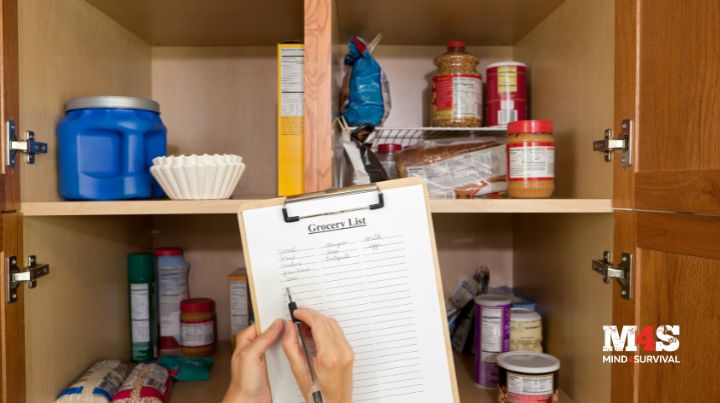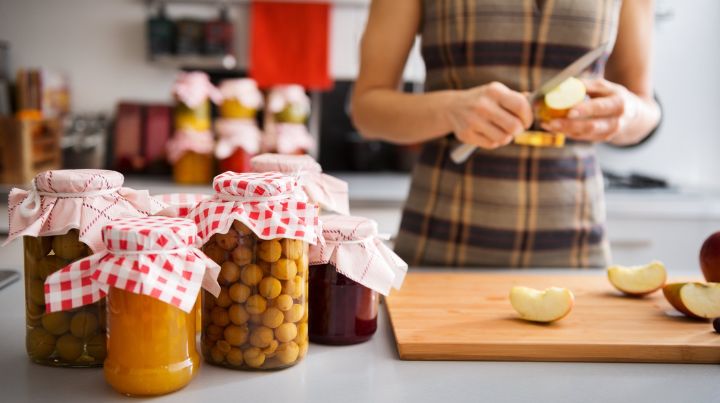Prepping Your Pantry On A Budget

We live in a precarious world. Having a well-stocked pantry is a crucial part of being prepared for unexpected circumstances. Disasters can take many forms, ranging from extreme situations such as a natural disaster or an extreme weather situation to more mundane—but no less important—challenges, such as the loss of a job or an illness that prevents you from working.
Having a well-prepped pantry can help you navigate a rocky situation. However, prepping your pantry doesn’t need to be a bank-busting endeavor. With a little planning, effort, and creativity, you can create a low-cost stockpile of food and supplies that will provide security for you and your family during tough times.
Quick Look at What You’ll Learn
Understand Your Needs
The first step in prepping your pantry should always be to assess your needs. Take into account your family’s dietary restrictions and typical food consumption patterns. Make a comprehensive list of items to meet those needs, prioritizing essential staples and non-perishable goods.
Buy What You Consume
An error some preppers and homesteaders make is purchasing items strictly because of those items’ shelf stability or because they don’t know where to start and are following other preppers’ guidelines. Don’t buy items your family won’t use or doesn’t like. Use your money wisely to stock up on items that you and your family will actually consume.
Shop Smart
When shopping for pantry staples, it’s important to keep an eye out for sales, discounts, and coupons offered by grocery stores and online retailers. Consider buying in bulk if you can, as it often provides better value for your money. However, only purchase quantities that you can realistically use or preserve before the expiration date. Compare prices across different outlets to find the best deals, and utilize loyalty programs and reward cards to accumulate points or discounts. Don’t forget flyers, and always check for eCoupons!
Stock Up Slowly
There is no need to invest large amounts of money in your pantry. Begin slowly by purchasing just one or two extra items while on one of your normal forays into the grocery store. These items should be shelf-stable essentials like canned goods, dry pasta, beans, and rice. You’ll be surprised by how quickly your pantry stock will grow.
Create an Environment of Self-reliance
Consider growing some of your own food. If you have access to a garden, a patio, or even a small balcony, you can grow herbs, vegetables, and even fruits that can significantly reduce your grocery bill. Consider container or hydroponic gardening, which requires much less space. Additionally, buying fresh produce in season and preserving it through canning, freezing, or dehydrating can extend its shelf life and save you money in the long run.

If you have the space and ambition, consider investing in a small “backyard barnyard” of poultry birds. With a little research and a small investment, you can start and maintain a flock of chickens, ducks, and other easily managed poultry that can give you big rewards in meat and egg production and prevent unnecessary runs to the supermarket.
Cover Your Basics
In addition to food, your pantry should also include essential non-food items such as toiletries, fire-making tools, first-aid supplies, batteries, flashlights, basic tools, cash, and non-electric appliances for heating food and your home. These items can prove invaluable during emergencies, particularly during power outages. As with your food items, stock up on these items when you see sales or discounts.
Don’t Pass Up a Deal
Most stores offer some kind of discount or “seconds” rack to move items out that have been on the shelf for a while. Never pass it up. You’ll be surprised by the incredible deals you can get on produce that may be a little older or items or gear going out of season. Remember, unseasonable items can be stored away for more appropriate times of the year.
Don’t Forget the Fur-maly
Be sure to stock up on supplies for your four-legged family members as well, especially when you see sales on pet food or when you have coupons. You can vacuum seal dry pet food in packages that can sit on your shelves almost indefinitely. If your pets require additional supplies or medications, add a little extra to your online cart when you are purchasing for them next time and shelve these items for later use.
Make it Last
Just by googling, you can learn basic food preservation techniques such as canning, freezing, and dehydrating to extend the shelf life of perishable items. It’s also a great way to shelve those items you purchased in large batches during sales events.
Rotation is Key
Organize your pantry efficiently. Periodically check your pantry items’ expiration dates and rotate your stock to ensure you are using older items before they expire. When you shop, position new items behind older items so you are using the older ones up first.
Use It Up
Before shopping for additional pantry items, take an inventory of what you already have in storage. You might be surprised at how much is already on your shelves. Keep a notebook or spreadsheet dedicated to your pantry stock and reference it frequently, especially before large shopping hauls. Create a “prepper’s budget” specifically for your family’s needs and stick with it.
Be Ready
By following a plan, you can create a well-stocked pantry that meets your household needs and still manages to stay within your budget. Remember, prepping your pantry is not about huge investments but rather about having a reasonable supply of essentials to provide comfort and security during challenging times.
Read the full article here










